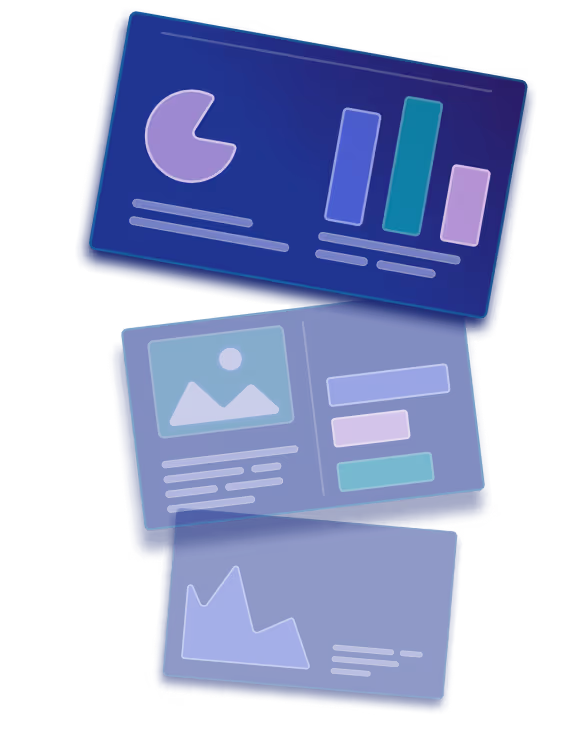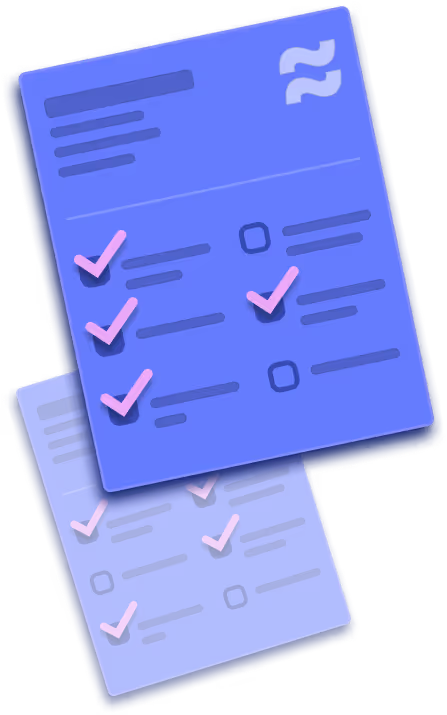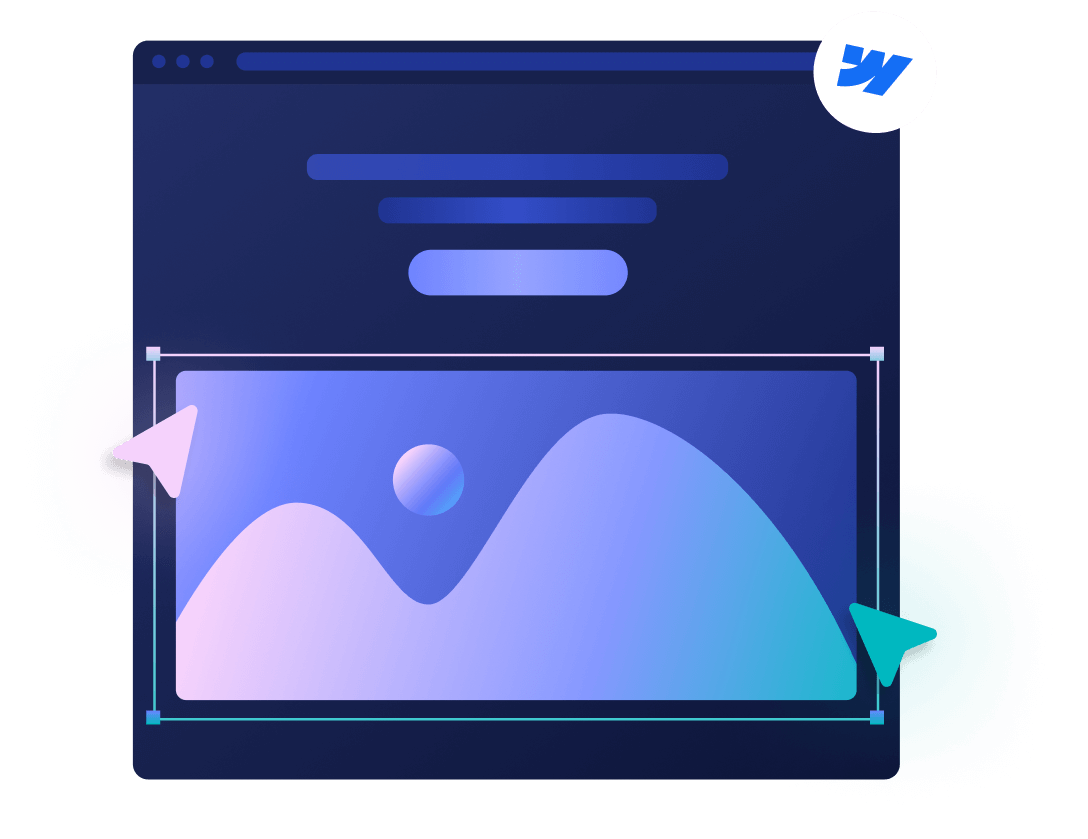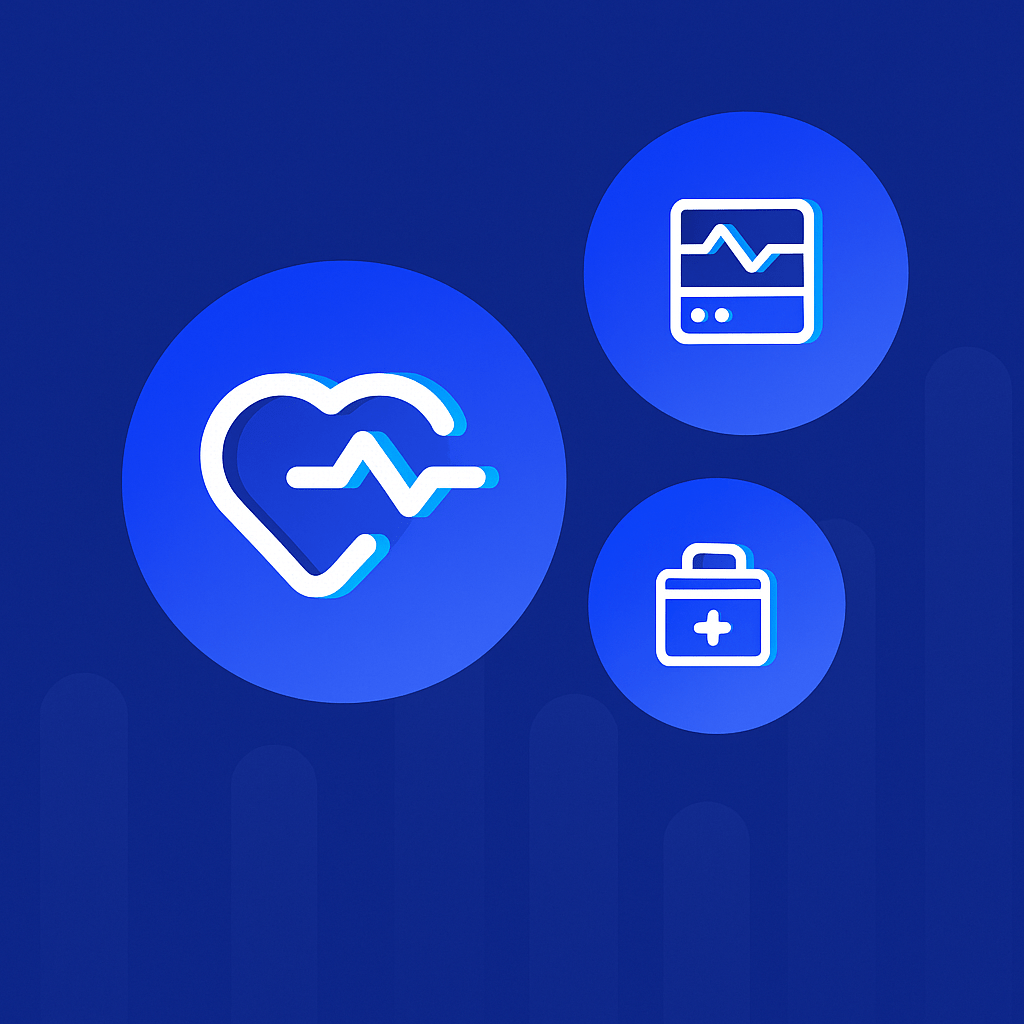
How to Increase Website Traffic: The Ultimate Guide (2025)
Key takeaways
- Growing traffic requires a mix of long-term SEO, paid campaigns, social media, email, and partnerships.
- Organic traffic is the strongest long-term channel, built through quality content, technical SEO, and targeting featured snippets.
- Paid traffic helps you scale quickly by focusing on high-intent keywords, strong landing pages, and retargeting.
- Social media traffic grows through consistent posting, evergreen and timely content, and smart collaborations.
- Backlinks and directory listings boost authority and visibility, especially when earned from high-quality sources.
- Email campaigns and content repurposing help maintain engagement and bring in more qualified visitors.
No matter the size of your company or your industry, you need a website in today’s digital world. This consequently means that you need to work hard to increase website traffic. The reasoning is simple — the more visitors you have, the better the chance of converting a portion of them into customers, eventually turning some into loyal customers.
Beyond the ultimate goal, increased traffic leads to better brand awareness, more valuable data and insights, a competitive advantage, and more cost-effective marketing campaigns.
This guide aims to help you achieve precisely that. We’ll go through several short- and long-term strategies across multiple channels together. You’ll learn the differences between different types of website traffic — organic, paid, social, referral, direct, and email — and how to increase the most important ones.
Understand the Different Types of Website Traffic
Here are all the types of website traffic you should consider:
- Direct traffic: This is the most straightforward kind that comes from visitors who get to your site directly, i.e. by typing in the URL. It also counts if they use a bookmark or a link in a document that’s not online, or a link in a message.
- Organic traffic: It stems from visitors that arrive via unpaid search results on Google, Bing, and other search engines. The most common example is a user typing a keyword for which you rank highly and then opening the link from the search results.
- Paid traffic: These are visitors who come to your site as a direct result of paid advertising. For example, this covers visitors from PPC, display ads, sponsored content, and social media ads.
- Social media traffic: This covers visitors who come to your site from social media platforms, which can be both paid and organic. The former also falls under the paid traffic category I explained, while the latter originates from links on social media.
- Referral traffic: Originates from site visitors entering via a referral link, which is any link on another website that isn’t a search engine. For example, a backlink to your site on a third-party blog, a link in an online directory like Yelp, or a link set up by affiliate partners.
- Email marketing traffic: Includes all visitors who come from links in emails. This might be a link in your newsletter, a Read More link, or a customer who clicks the View Order link in a transactional email like order confirmation.
{{cta}}
Organic Traffic: SEO as a Long-Term Growth Channel
To improve your organic traffic, which is key for long-term success and a robust online presence, SEO is the name of the game. Let’s take a look at the main things you should be doing.
Create SEO-Optimized, High-Quality Content
Content is the cornerstone of any successful website. Be it images, interactive elements, or text, you need to focus on creating high-quality content that’s fully SEO-optimized. In the age of AI, it might seem like this is no longer the case, but human-made, experience-driven content is what separates the best from the average.
With written content, quality should be accompanied by long-tail and intent-driven keywords, not broad keywords. They might have lower search volumes, but they typically come with higher conversion rates as they fully define the user’s need.
Blog posts and other content should be well-structured and optimized for easy reading and skimming. That’s why you should:
- Use headers strategically and correctly
- Focus on short paragraphs with only 2–4 sentences
- Use internal links wherever it’s appropriate
Lastly, don’t forget to build your content around central topic clusters, i.e. pillar pages with cluster content. To streamline the process, consider using AI for project management, because your content strategy should be a well-organized long-term effort.
If you're targeting international markets or multilingual audiences, Webflow localization or Weglot can allow you to serve content in different languages. This can help you boost organic visibility in local search results and better connect with regional audiences.
Optimize Technical SEO and Core Web Vitals
Content is critical, but even the best kind will fail to garner sizable amounts of traffic if your website has technical problems. That’s why you have to work on optimizing technical SEO and improving your Core Web Vitals. And yes, Core Web Vitals still matter, although not as much as they used to in the past.
You need to consider the fundamentals like implementing schema markup, using canonical tags, and cleaning your URL structure.
More importantly, you need to:
- Fix crawl issues by regularly checking your Google Search Console for crawl errors.
- Improve site speed by compressing images, leveraging browser caching, using a content delivery network, and minifying CSS and HTML, among other things.
- Achieve mobile responsiveness by ensuring the site adapts seamlessly on mobile devices.
You can also use programmatic SEO, as it drives traffic as well.
Target Featured Snippets and FAQ Sections
Everything we’ve talked about is about ranking highly on the first page of search results. However, you should also aim for the zero position, i.e. the featured snippet section on Google and the People Also Ask section.
Now, since featured snippets usually provide direct answers to questions, it’s important to write clear and concise answers to common queries.
Even though they are now being replaced by AI overviews for certain questions, these still require the same form of content optimization. In other words, this is also great practice for Generative Engine Optimization (GEO), not just good old SEO.
Ensure you’re also using bullet points and numbered lists, as well as headings, since this makes your content look the same as the snippets.
Although it’s not a direct ranking factor, it’s also good to add schema markup to key pages. Foir example, you can use the FAQPage schema for FAQ sections or the HowTo schema for step-by-step instructions in your guides and blogs.
Paid Traffic: How to Scale Traffic Fast
If you want to get instant visibility and scale traffic quickly, you’ll need paid traffic from paid advertising campaigns. Let’s study what you should do if you want to get a good bang for your buck.
Use Google Ads for High-Intent Keywords
Google Ads lets you target ads to specific audiences and comes with flexible budgeting. This technically means you can bid on keywords, including high-intent ones, which will display your ads to people who are actively searching for those exact terms.
The main thing to focus on here are bottom-of-funnel keywords, i.e. search queries from people who are actively looking to make a purchase as they’ve passed the initial research phase in their journey.
Ensure you’re linking ads to pages that are designed to convert, like high-converting landing pages, not generic ones. You don’t even need to link to your homepage or the general product category page.
But before you begin any of this, set a clear budget. Then, when the campaign begins, meticulously track results like completed purchases, phone calls, newsletter sign-ups, downloads, and more. All of these can also fuel an effective retargeting strategy to re-engage visitors who didn't convert the first time. Track key metrics like cost per conversion (CPC), conversion rate, and return on ad spend (ROAS).
Test Paid Social Campaigns
Google Ads may be the go-to solution for paid traffic, but if you want to reach a different part of your audience, especially those in the earlier stages of their customer journeys, you’ll need to use paid social media campaigns. Bear in mind that I’ll talk about unpaid social media traffic later.
There are plenty of platforms here, but not all are needed, as this depends on your business model and your audience:
- LinkedIn has a B2B focus and is best suited for lead generation, but also for propping up your professional network, promoting yourself as a thought leader, and advertising webinars and whitepapers.
- Facebook has a B2C focus and is excellent for driving e-commerce sales, improving brand awareness, and reaching a diverse range of consumers thanks to Facebook’s massive size.
- Instagram is a visual social media platform, and it’s more suited for B2C than B2B. It’s primarily used by fashion, e-commerce, beauty, travel, or any other industry that relies on images and videos.
Bear in mind that running paid social media campaigns means you need to write a compelling ad copy that has clear and motivating CTAs.
It’s also beneficial to use retargeting, as it's one of the most effective strategies available. These campaigns will re-engage users you have already been targeted and who have already engaged with your business. The retargeting will make them more susceptible to your messaging and improve the chances of conversion.
Social Media: Build Consistent, Engaged Traffic
After paid social media traffic, we need to talk about the “default” type of traffic you can get through social media platforms, i.e. the organic kind. It will help you improve engagement, build up your community, and get consistent and natural interest in your business. Let’s see what you can do to increase this type of traffic.
Share Evergreen and Timely Content
To find success on social media, you need to be constant and consistent with posting content. You can share blogs, videos, case studies, infographics, quizzes, etc. However, try to include well thought-out captions, not just shared links.
It’s also good to post a decent mix of evergreen and seasonal or trending content:
- Evergreen content is there to drive traffic and engagement for months, if not years. You can also reshare old evergreen content periodically to get new audience members.
- Trending or seasonal content will help you position yourself as a relevant player in your industry and has the potential to significantly boost engagement during key periods.
- You can also create downloadable guides that can serve as effective, low-maintenance lead magnets.
Besides sharing the right type of content, you also need to worry about using the right platform:
- LinkedIn is for case studies, industry insights, and in-depth articles.
- X (Twitter) is for links to new content, quick updates, industry news, and asking questions. You can also integrate Twitter on your website to boost user engagement.
- TikTok is for short-form videos for a younger audience, but also for the millennial generation.
- Instagram is for short videos, high-quality images, and infographics.
- Facebook is for a mix of content, ranging from blogs to live streams and posing questions.
Collaborate With Influencers and Partners
Besides your own content, focus on creating and fostering strategic collaborations with various creators and brands. This should extend your reach, as long as your partners’ followers align with your target audience.
You can use tactics like guest posting, joint webinars, live sessions, shout-outs and mentions, joint giveaways or contests, and content swaps, among others.
Always tag your partners in all posts because this ensures that people see the collaboration. Do co-promotions with consistent messaging and hashtags to boost your visibility.
By doing all of this, you get a chance to engage with an already existing and engaged community that aligns with your target audience and thus has the potential to significantly boost your traffic and conversions.
Referral and Backlink Traffic: Build Domain Authority
Referral and backlink traffic will help you build up your domain authority, while it also plays a big role in brand visibility, SEO, and engagement. Continue reading to discover how to boost this type of traffic.
Earn Backlinks From High-Authority Sources
Backlinks remain a big part of SEO, showing that your site is authoritative. However, you need to focus on backlinks from high-authority sources because quality completely outperforms quantity here.
Focus on digital PR, guest blogging, and original research:
- Digital PR involves promoting your most valuable content to media outlets, bloggers, and journalists from your industry.
- Guest blogging involves creating and publishing content on reputable websites in your industry.
- Original research and studies involve creating deeply researched studies that are excellent at attracting backlinks.
Note that backlinks to product and landing pages are a lot more valuable than blog-only links, so it’s crucial to look for opportunities where you’ll get sites to naturally link to these instead of your blogs.
Naturally, since backlink strategies need to be long-term, it’s best to invest in an SEO tool that will help you here. The most obvious choices are industry leaders like Ahrefs and Semrush, both of which let you monitor your links, analyze competitor backlinks, and identify broken and disavow spammy links.
List Your Brand on Relevant Directories and Review Sites
It’s always important to list your brand on relevant online directories and review sites, especially if you have a local business. The listings will improve your online presence and build trust, while also increasing referral traffic.
Naturally, you shouldn’t limit yourself to one general directory, you should go for more, including:
- General business directories like Google Business Profile, Yelp, and Facebook Business Page.
- Comparison hubs for specific industries like TripAdvisor (hospitality), Zocdoc (healthcare), and G2 (software).
- Niche platforms and industry-specific directories.
These links don’t just offer referral traffic, but they also increase visibility, improve your reputation, and build trust.
However, you also need to optimize your descriptions and profiles by including a compelling value proposition, high-quality images, and relevant keywords. You also need to ensure all of your main data, like name, address, and phone number, match across all directories.
Bonus: Other Strategies to Boost Traffic
I have a few other strategies I believe can help you boost your traffic. Check them out below.
Launch Email Marketing Campaigns
The benefits of email marketing are many, and businesses should definitely use it to boost traffic.
You should promote new content, features, and offers via email. You can use newsletters and drip campaigns to re-engage visitors, which should have a positive impact on conversions.
When creating emails, ensure they are optimized for mobile and include strong CTAs that encourage readers to click. You can also consider using email marketing tools to automate these tasks and streamline your campaign.
Repurpose Content Across Formats
Old content can and should be repurposed. For instance, you can turn your blog posts into videos, infographics, or LinkedIn carousel posts.
Ensure you’re embedding proper CTAs into these repurposed content pieces to attract new visitors.
By repurposing content, you gain a new way to reach new audiences across various platforms.
{{cta}}
Final Thoughts
To increase website traffic, you need a mix of consistency, strategy, and experimentation. You need to develop well-thought-out strategies, stick to what you’re doing, especially with the tips you’ve learned here, and constantly experiment to either improve your current strategies or develop new ones that yield better results.
However, remember that traffic needs to serve a purpose, so you shouldn’t chase high volumes, but rather qualified visitors who offer the highest chances of conversion.
If you want a scalable website that drives traffic, Flow Ninja can help you. Reach out to see what we can do for you. If you decide to partner with us, know that we start every project with a discovery phase where we focus on understanding your goals, needs, and challenges that need solutions.
FAQ for Increasing Website Traffic
What metrics should I track to assess the success of my organic traffic strategy?
Key metrics to monitor include organic traffic volume, bounce rate, average session duration, keyword rankings, pages per session, and conversions from organic sources. These indicators help evaluate both visibility and user engagement derived from search engine performance.
How does programmatic SEO differ from traditional SEO techniques?
Programmatic SEO uses automated tools and templates to create large volumes of keyword-targeted pages efficiently, primarily for long-tail searches. Traditional SEO is more manual and content-focused, emphasizing quality over scale. Both approaches serve different strategic goals.
What tools are best for monitoring backlink quality and performance?
Top tools for backlink analysis include Ahrefs, Semrush, and Moz. They allow users to assess link authority, referring domains, anchor text distribution, and identify toxic links for disavowal to maintain link profile health.
What are the advantages of targeting long-tail keywords in content strategy?
Long-tail keywords typically have lower competition and attract users with specific search intent, resulting in higher conversion rates. They help capture niche audiences and support more targeted, intent-driven content strategies over time.
How should I prioritize SEO efforts when managing a multilingual website?
Start by targeting local keywords in each language, using hreflang tags to signal language targeting to search engines. Maintain high-quality translations and locally relevant content to ensure each version ranks well in regional search results.
What makes a landing page high-converting for paid traffic campaigns?
Effective landing pages feature a clear value proposition, minimal distractions, prominent calls-to-action, fast load speed, and content that matches ad intent. Including social proof and mobile responsiveness also enhances conversion rates.






.svg)





-min.png)

.png)
.png)






.png)
.png)








.svg)

.png)
.png)
.webp)
.svg)

